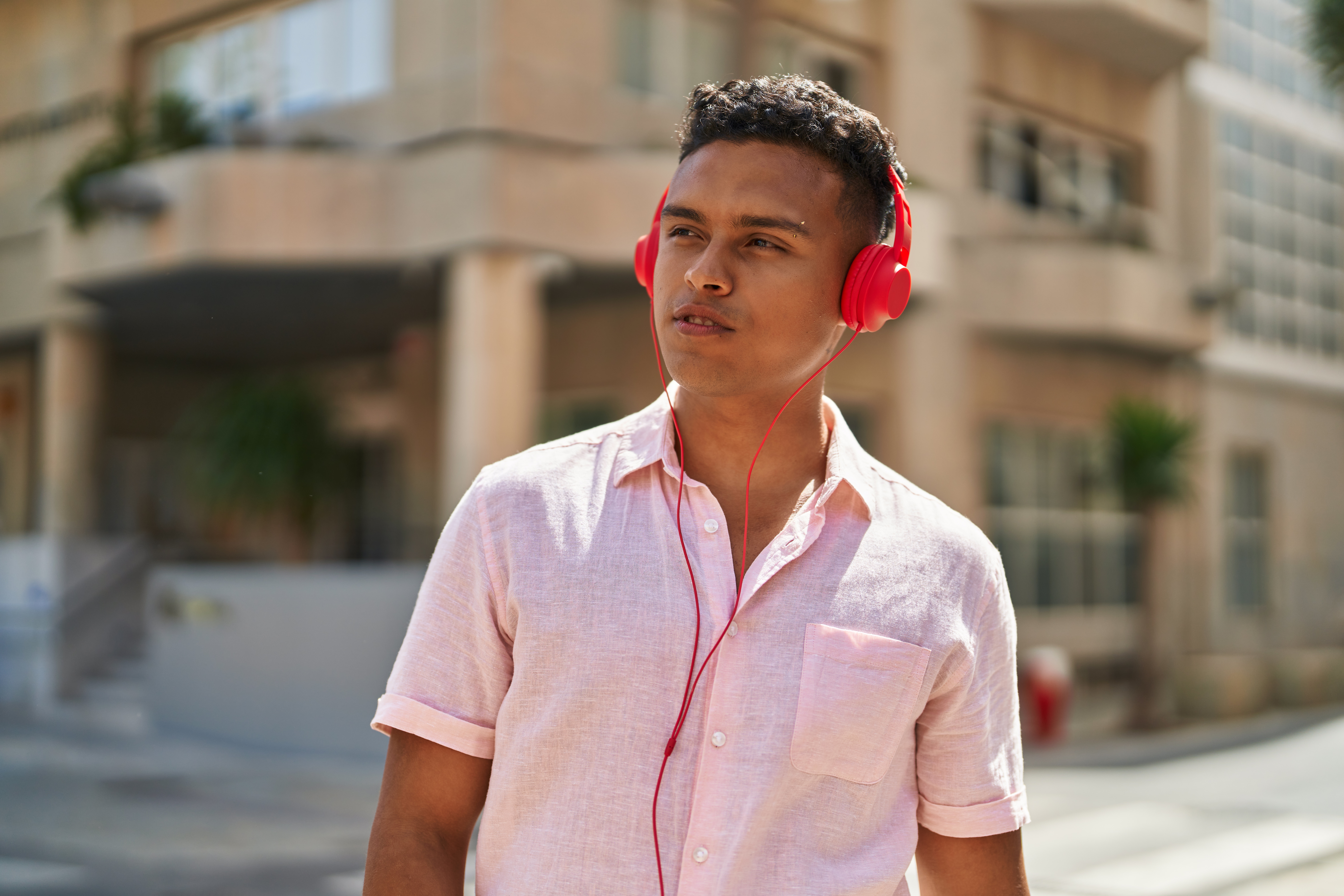Podcast Advertising & Social Media Advertising: A Comprehensive Guide

Introduction
If there is one thing that the marketing and media industry can all agree upon, it is that change is inevitable and often rapid. There are more platforms, devices, ad units and data sources than ever before.
There is more and more time spent with content and media; and brands are looking for ways to not only maximize the impact of each media channel they invest in but also find synergies between channels.
At Ad Results Media, we believe that there are some inherent and unique benefits to using podcast advertising that cannot be said about other media channels. We also believe that planning and activating media on podcasts and social media in tandem can pack a powerful punch. We explore the similarities and differences in this article.
Understanding Podcast Advertising
Podcast advertising is the ability for brands to pay for placement of their advertising within various podcast shows. Podcast ads are typically bought directly from podcast show hosts/owners or programmatically using an audience-based buying approach.
Types of Podcast Ads
- Audio Ads (pre-roll, mid-roll, post-roll)
- Host Reads (pre-recorded or live); Non-Endorsement
- Host Reads (pre-recorded or live); Endorsements
- Custom Segments
- Branded Series
- Presenting Sponsorships
Podcast advertising is a rocketship right now and shows no signs of slowing. Total ad revenue is up 26% year-over-year and podcasting continues to be one of the fastest growing digital channels increasing two times faster than digital advertising overall (+11%*). In fact, revenues are projected to more than double between 2022-2025 to ~$4 billion.
For brands looking to effectively drive consideration, podcasts are far and away the preferred channel by consumers. 68% of consumers are more willing to consider a product or service after hearing about it on a podcast. This is more than YouTube/Online Video (62%), Social Media (61%), Live or Recorded TV ( 54%), and Am/FM Radio (49%).***
Benefits of podcast advertising
Incremental Reach
Podcast buys reach net-new consumers when added to TV or Radio buys. For adults 18+, there is an incremental reach of 12% over AM/FM Radio and 11% incremental reach over TV***.
Borrowed Affinity and Equity from Podcast Hosts
Podcast listeners feel significantly more positive towards the brands that support the their favorite hosts than they do of Radio listeners or TV viewers**• There is a halo effect of positive brand association just by advertising on the medium.
Full Funnel Impact and Efficiency
The Sounds Profitable team surveyed consumers of several leading US advertisers to understand the impact that Podcast, AM/FM, and TV advertising had on full-funnel metrics. They found that the leading advertisers in podcasting perform significantly better in lower-funnel metrics with podcast listeners than the leading advertisers in TV and Radio do with their consumers. As well as the addition of podcasts to a multichannel media mix shows significant mid-funnel effects***.
Enhanced Brand Storytelling Opportunities
Podcast advertising offers brands the opportunity to partner with hosts that are true brand fans and have earned the trust of their listeners. Host-read ads have a virtually unlimited canvas. Hosts can take as much time as they want to tell their personal stories with brands and products.
Exploring social media advertising
Social media advertising is the practice of placing paid advertisements on popular social platforms like Facebook, Instagram, TikTok, Snapchat and Twitter. These ads generally appear in the feeds or stories of users and are targeted using proprietary, walled-garden demographic, interest and behavioral data.
Social ad revenue growth is slowing. Meta’s worldwide ad revenues will increase just 8.2% in 2023. Even TikTok will grow much more slowly (43.0%) in 2023 than in 2022 (155.0%). This will cause social platforms to explore subscriptions and other non-advertising revenue streams.**
In fact, social network ad spending will grow slower than overall digital ad spending. The US digital ad market will have a compound annual growth rate (CAGR) of 10.0% through 2025, while social’s CAGR will be 7.5%. Social networks will still be the second-biggest digital ad spending channel through the end eMarketer’s our forecast period**.
Key Differences between Podcast and Social Media Advertising
Targeting capabilities
At present, there are different data sets available to target podcast ads and social media ads. For the most part, the data sets available within the social media walled gardens are far more robust than the native targeting of podcast publishers. However, the tide may be turning on that. With the reduction of 3rd party cookies and the privacy changes that Apple has made to cross-device tracking – this has left many social media platforms with a significant reduction in their access to user behavioral data. As their access to data is further restricted while the penetration of programmatic podcast advertising increases, we may see targeting capabilities that are more at parity than previously thought possible.
Format and creative considerations
A big difference between podcast advertising and social media advertising formats is the degree to which visual media is used. The vast majority of podcast ads are audio-only with some exceptions made for companion banners and video podcasts. On the other hand, all social media ads either include a static image (single or carousel) or a video. For this reason, there are a few creative implications that ad producers need to take into consideration when designing for each experience.
Podcast Advertising
- For Host-read ads, let the host do the talking. Brands can provide them with key talking points and CTAs, but let them tell the brand story in their own words.
- For pre-produced audio ads, make sure the brand is repeated for recall and the ad includes a clear call-to-action that may include a vanity URL or promo code.
- For both formats, driving a sense of urgency is key to drive conversions.
Social Media Advertising
- For video ads, it is largely recommended that the advertiser’s branding or logo is included in the first 3 seconds of the ad.
- For static image ads, carousels are a highly effective format and a great way to drive purchases of a brand’s product catalog. Brands can dynamically curate a shopping experience for each consumer based upon past browsing or shopping behaviors.
- Design to stop thumbs! Each major social platform displays content in a feed and users need a reason to slow those thumbs and take a longer look.
Cost and pricing models
Social Media
- Social buying platforms have mature measurement capabilities and flexible buying models. These platforms enable marketers to buy media against specific campaign objectives like: reach, brand awareness, engagement, click-through, video views, follower growth, site traffic and sales conversion. As such, the pricing models vary significantly by brand/product category and campaign objective. We recommend establishing your own brand benchmarks for CPM, CPV, CTR, CPC, CPA, VTR and ROAS.
Podcast Advertising
- Podcast advertising has less variables to take into consideration when planning and pricing your buy. There are two primary ad serving methods:
- Baked In: These are ads that live in the show in perpetuity and are included in every download – regardless of how much time has elapsed since the show has run. They are definitely our preferred ad unit. Typically, this format allows for ads to be in more downloads than what was originally purchased.
- Dynamic Ad Insertion (DAI): These are ads that are placed into each download dynamically and, as a result, may be different for each individual download. Each advertisement is inserted until it reaches the contracted number of downloads. Note: a lot of DAI ads are host endorsed or host read. DI and third party voice overs are not synonymous.
- Podcast ads are often priced on a gross CPM basis:
- When evaluating a proposal, CPM provides a good common denominator to compare across shows or networks. CPM is cost per mille, or is the cost you’ll pay per 1,000 downloads (AKA Impressions). To calculate a CPM on your own, you would use the following formula: Cost/(Downloads/1000).
- There are a number of factors that influence the cost of podcast ads cand podcast CPMs tend to be highly variable based on a myriad of factors. ARM’s rich history of data has enabled us to build a leading rapport with publishers to negotiate rates that drive performance for our clients. In general, you can expect a median CPM range of $20-$30 depending on factors such as ad placement, ad type, show host, etc…Midroll ads tend to be more valuable because they typically perform better than pre and post roll ads.
Read more: How Much Podcast Ads Cost
Audience engagement and trust
Brands who use podcast advertising and influencer marketing on social media benefit from borrowed equity and trust – this comes from the personal endorsement of the hosts or creators that share their personal experiences.
Ad Results Media specializes in creator-driven marketing strategies using both audio and video mediums. We have found that brands who prominently include hosts or creators in their marketing see both higher engagement rates and greater trust from the audience.
For example, in a recent survey, 68% of consumers said they are most likely to consider brands they hear about on podcasts – more than any other medium***.
Integrating Podcast Advertising with Social Media Strategies
Cross-promotion opportunities
We believe that there are several largely untapped opportunities for brands to cross-promote their message using both podcast advertising and social media advertising.
Extended Distribution
Partner with podcasters to promote your brand on their show as well as on their personal social media channels.
Retargeting on Social Media
Using the robust data sets available on social media and retarget known fans of specific podcasts with your messaging. This will help increase frequency and recall.
Cross Channel Product Seeding
For brands that want to drive trials of new products, there is also a huge opportunity to execute a cross platform product seeding strategy. By seeding the product to both podcast hosts as well as social media influencers at the same time, there will be a higher volume of audio, photo and video content created in concert with one another. Your target consumers will hear or see these creators discussing their experiences on multiple platforms.
Using podcast content to compliment social media engagement
Podcast advertising can also be an excellent way to drive increased engagement and reach on social media. Brands can use their social media channels as a way to educate their audiences even more about their brands and products by including a social CTA in their podcast ads. These social CTAs could include: “Follow us @”, “see our products in action on our Instagram channel” or “see extended BTS conversations on Facebook, YouTube, TikTok or Instagram”.
Conclusion
While podcast advertising and social media advertising may seem like very different marketing channels because of their vastly different user experiences; they are in fact comparable or complimentary in many ways. We invite you to explore these opportunities with the team at Ad Results Media that specializes in holistic creator-based marketing.
*The Infinite Dial 2023
**eMarketer: Social Media Trends to Watch for 2023
***Sounds Profitable Medium Moves the Message 2023


